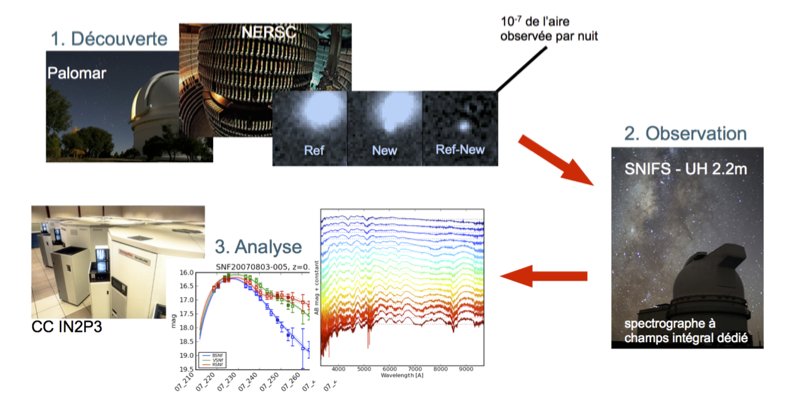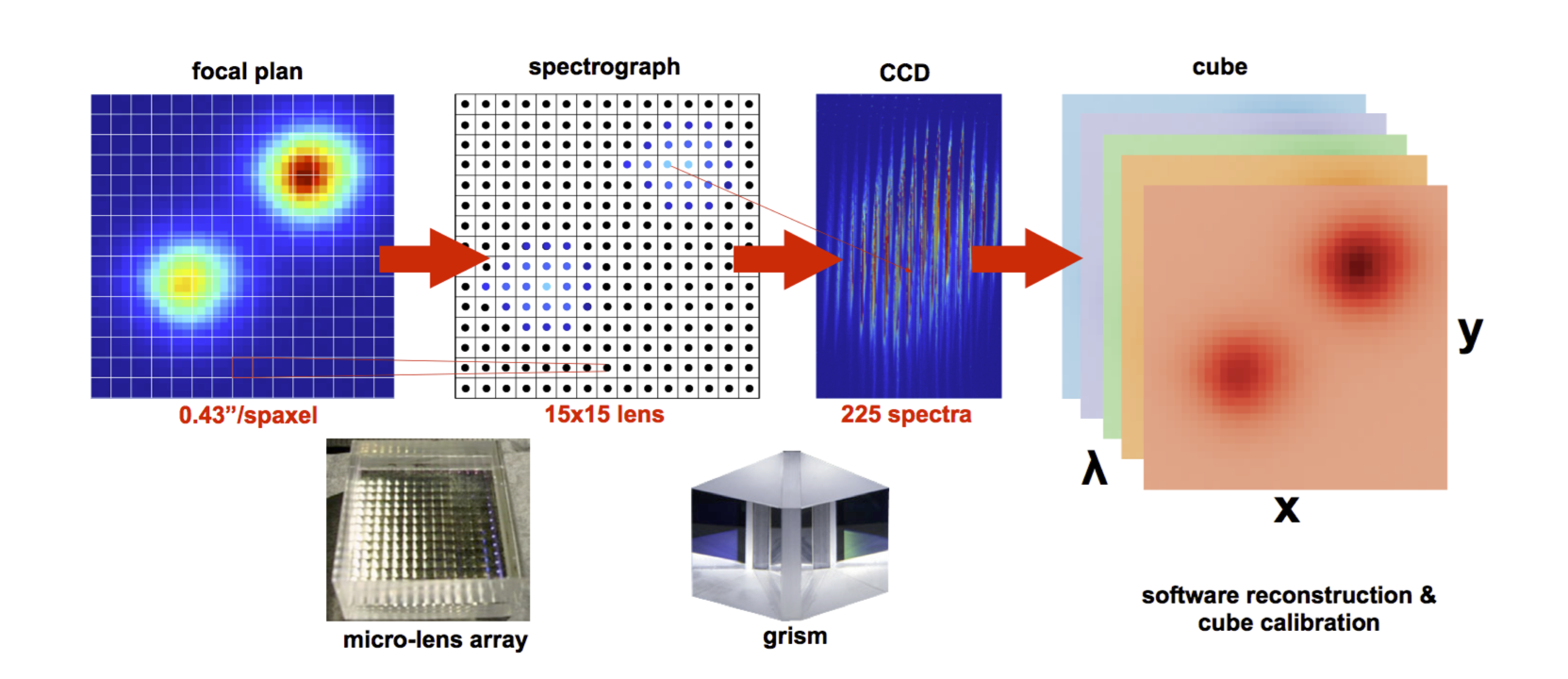Projects¶
From 10/01/2006 to 31/12/2013, I was deeply involved in the Nearby SuperNova Factory project (SNfactory). During this period I studied for my PhD both at IPNL in Lyon (France) and LBNL in Berkeley (USA), then I worked as a Postdoc at the Unversity of Bonn (Germany). As from 01/01/2014, I became a permanent author of the collaboration. In the SNfactory project, I was especially involved in the development of the spectro-photometric flux calibration and analysis of the 3D integral field spectrograph SNIFS.
From 01/01/2013 to 31/08/2014, I was a member of the CHiPSpeCT consortium dedicated to the development and characterization of the hybrid-pixels quantum X-ray detectors (XPAD). I was in charge of the development of the acquisition and calibration pipeline for the collaboration.
As from 01/09/2014, I am working in the emCMOS group at IPNL on the MultiMOS project in collaboration with the international company E2V which develop the chips. My work constists essentially on analysing and characterizing Electron Multiplying CMOS (emCMOS) chips.
MultiMOS¶
Electron Multiplying CMOS¶
Scientific low light imaging devices benefit today from designs for pushing the mean noise to the single electron level. When noise reduction reaches its limit, Signal-to-Noise Ratio improvement can be driven by an electron multiplication process, driven by impact ionization, before adding the readout noises. This concept already implemented in CCD structures using extra-pixel shift registers can today be integrated inside each pixel in CMOS technology. The emCMOS group at IPNL is in charge of the characterization of new prototypes developed by E2V using this concept : the electron multiplying CMOS (emCMOS). The CMOS technology enables electron multiplication inside the photodiode itself, and thus, an overlap of the multiplication and the integration of the electrons.
CHiPSpeCT & XPAD¶
Hybrid pixel detectors¶
Modern X-ray imaging systems allow to obtain images immediately after exposure. The systems based on amorphous silicon photo-diodes and CCD detectors are very commonly used. Two decades ago, a new type of X-ray imagers based on photon counting instead of charge integration during exposure has been introduced for particle tracking in high energy physics experiments (Becks et al., 1997). This approach called quantum X-ray imaging is capable of discriminating and processing each single X-ray photon in addition to counting them. It also offers improved image quality and noise subtraction compared to the former devices (Bérar et al., 2002) while operating at room temperature. In this so-called hybrid approach where analytic electronic chain is physically bound to each pixel, the sensor material can be chosen according to the energy of the X-ray photons to be detected and the electronics custom-designed for specific applications (Basolo et al., 2008; Ballabriga et al., 2011). Sensor and electronics are assembled using bump-bonding and flip-chip technologies resulting in a hybrid-pixels photon counting detector.
The Nearby Supernova Factory¶
The Nearby Supernova Factory is an international collaboration created in 2000 between cosmolgy teams at the LBNL (Berkeley, USA), LPNHE (Paris, France), IPNL (Lyon, France), CRAL (Lyon, France) and CPPM (Marseille, France) in order to improve our understanding of type Ia SNe as distance indicators. In 2010, teams from Universität Bonn (Bonn, Germany), MPA (Munich, Germany) and Tsinghua University (Beijing, China) joined the project.

Observational cosmology with Type Ia SNe¶
Thermonuclear supernovæ are used as cosmological probes to constrain the dark energy equation of state. During the last decade, a generation of surveys (SNLS, Essence, SDSS,...) has significantly increased the moderate to high-redshift (z > 0.1) supernova sample. However, the low-redshift sample remained a limiting factor of the cosmological analysis using SNe. Several projects started with the goal of improving the current data set in order to act as a lever arm of the Hubble-Lemaître diagram and to improve our understanding of SNe. Among them, the Nearby SuperNova Factory project initiated by Saul Perlmutter (Nobel price 2011).

SuperNova Integral field spectroscopy¶
The first characteristic of SNfactory, which tells it apart from the other classic type Ia supernovæ experiments, is its observational approach based on Integral Field Spectroscopy (IFS). Traditional surveys are following photometrically the luminosity evolution of the supernova as a function of time. A single spectroscopic measurement usually close to the maximal luminosity is used to identify the type of the supernova and the redshift of the host galaxy. In SNfactory, the field of view of the instrument is divided into small spatial elements (spaxels) and provides simultaneously a spectrum for each spaxel. The spectroscopic field of view covers the field (sky + galaxy + supernova) and the flux of the supernova is collected. A three dimension (x,y,λ) data cube can be reconstructed. This technique allows accurate spectro-photometry, while in traditional spectroscopy the collection efficiency depends on the size of the slit (therefore, on the resolution), and a careful slit alignment is needed to subtract roughly the host galaxy.
